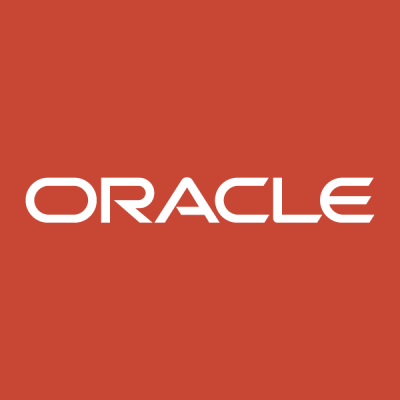Be ready for your job hunt and Oracle interviews with ease. Book a mentorship today with a past or present Oracle employee and get a head-start with realistic mock interviews!


Offered by Vasu Rao
During my 25-year Tech career, I have hired hundreds of tech professionals. I have also coached over 100 tech professionals, from engineers to VPs, and … Read More

Offered by Jamie Forrester
I didn't start my career in presales and it took me years to break into an SE role. Now I have 12 years of Solution … Read More

Offered by Svilen Stefanov
My name is Svilen and I am a Senior Software Engineer at Oracle. I offer mentorships on a variety of topics, particularly for people aspiring … Read More

Offered by Mohamed Salah
None Read More

Offered by Rudra Purohit
Hi! I'm Rudra. I'm a Senior Software Engineer at Uber with 8+ years of experience. In the past five years I've worked at Uber, have … Read More

Offered by Avinash Saraff
I have been interviewing candidates for over a decade both as an engineer and manager. If you would like to practice interviewing for behavioral interview, … Read More
Don't leave getting your dream job to chance. Drastically improve your interview performance with a mentor from Oracle.
Interview questions aren't always fair. The best thing you can do is prepare for them. Get the inside scoop on current interview questions from current Oracle employees.
Technical interviews often ask for very specific skills. Get help from a Oracle expert to hone your skills and get the job.
Way better than yet another coding exercise. Get detailed feedback on your interview performance from an industry expert.
Practice makes perfect. Get a real life mock interview with a Oracle expert and get the job.
Oracle experts are available at affordable rates. Get the help you need to get the job without breaking the bank.
Get continued career coaching services from a Oracle employee. Get help as you enter your new job and beyond.
Get the inside scoop on current Oracle interview questions. Prepare for your interview with a few select questions you might face.
I began working with Oracle Database during my first internship and have accumulated several years of experience since then. My roles involved administering databases which required me to understand database architectures and employ best practices for database management.
I have been responsible for various tasks ranging from installation and configuration of Oracle databases, performance tuning to ensure efficient use of resources, creating and maintaining user roles to ensuring database security, to planning and implementing backup and recovery strategies. I enjoyed solving performance issues by optimizing SQL queries and tuning database parameters.
During my experience, I also actively coordinated with development teams to ensure smooth deployment of applications and managed schema changes in various environments. Each of these experiences provided me with a wide breadth of practical knowledge on Oracle Database Management.
Oracle Server architecture is based on a relational database framework where data objects can be directly accessed by users through Structured Query Language (SQL). Oracle Server Architecture includes three primary components: the memory structures, the background processes, and the data files or storage.
The memory structures include the System Global Area (SGA) and the Program Global Area (PGA). The SGA is a group of shared memory structures containing data and control information for one Oracle database instance, while the PGA is a memory region containing data and control information for a server or background process.
Background processes are asynchronous to improve performance and do not impact the user's interaction with the database. They manage memory structures, asynchronously write data to disk, and perform cleanup tasks.
The storage, or data files, consists primarily of the data that is stored in the database. It also includes other files like redo log files, control files, and temporary files, needed to manage and operate the database itself.
This architecture allows Oracle to deliver high performance, scalability, and optimal resource management, among other benefits.
In Oracle, a tablespace is a logical storage unit within a database. It's used to group related logical structures together. For instance, specific types of information may be stored in individual tablespaces for the organization, security, or to control the disk layout of the database.
Every Oracle database contains a tablespace named SYSTEM and may contain additional tablespaces. A tablespace comprises one or more data files, which are physical structures residing on the disk. Each tablespace in an Oracle database consists of one or more files called a datafile, which are physical structures on the disk.
Thus, tablespaces are essential for the organization and management of a database as they allow DBAs to manage the disk space for the database at a higher level than individual files, providing both flexibility and efficiency.
Oracle is a leading provider of database software and technology, cloud engineered systems and enterprise software products. Oracle's relational database management system (RDBMS) primarily runs on mainframe servers and is known for its scalability, robustness, and multiplicity of features.
Regarding my experience, I have worked with Oracle for over five years. My expertise extends to Oracle Database Administration, PL/SQL development, and performance tuning. I have primarily worked with Oracle versions 11g and 12c. I've handled responsibilities including installation, configuration, database design, migration, performance monitoring, security, troubleshooting, and backup and recovery. Furthermore, I have worked with Oracle Data Guard for high availability and disaster recovery solutions. I've also had the opportunity to use Oracle’s enterprise manager for managing the database infrastructure.
To clone an Oracle database, one can use the RMAN (Recovery Manager) utility. It's Oracle's in-built database backup and recovery manager and an efficient tool for creating an oracle database clone.
First, you need to make sure that the database you want to clone is in archivelog mode and the flashback is enabled. Next, you use the RMAN duplicate command to clone the database. This process involves creating a backup of your source database, copying it to the destination server, and then using RMAN to 'duplicate' the database on the destination server.
It's crucial to observe proper permissions and credentials when accessing both source and target databases. You'll also have to handle tasks like updating parameter files, setting up connections to new listeners, and verifying the success of the clone. Remember, every scenario might have unique complexities and challenges, so this process could vary based on the system's details and the specific needs of the operation.
We've already delivered 1-on-1 mentorship to thousands of students, professionals, managers and executives. Even better, they've left an average rating of 4.9 out of 5 for our mentors.
Book a Oracle mock interview